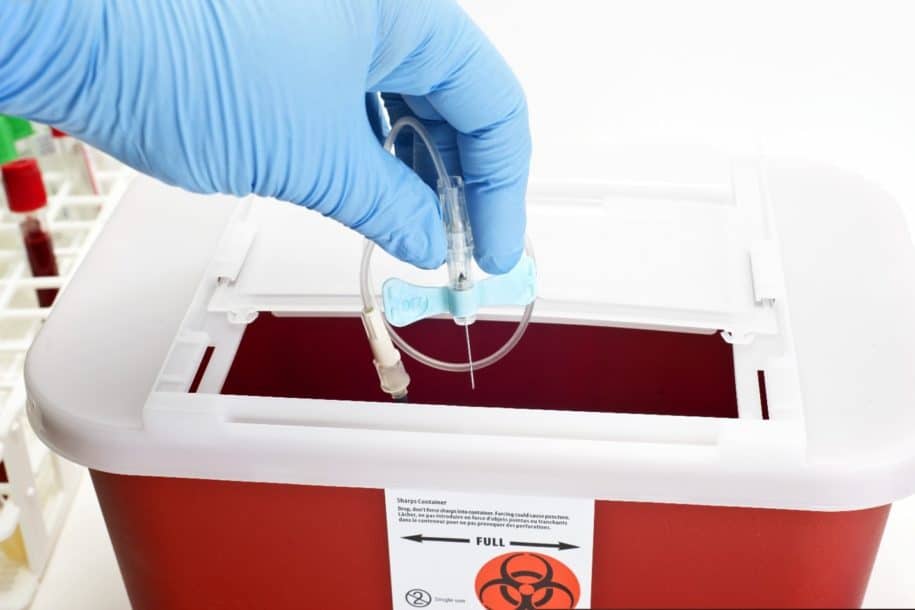Many industries and businesses struggle with waste management. Also known as waste disposal, waste management covers every stage of the disposal process—from waste generation, collection, and transportation to proper treatment and disposal. Failure to correctly manage waste could result in long-term environmental damage, health consequences, or even civil and criminal penalties. To maintain compliance with existing environmental laws and the Environmental Protection Agency’s (EPA) regulations for hazardous waste, businesses need to adopt cutting-edge technological solutions (including EH&S software) to optimize their waste management systems. This entails processes for handling general waste as well as hazardous and regulated waste management. To fully appreciate these benefits, it is important to understand the extra considerations when dealing with hazardous and regulated waste.
What is Hazardous and Regulated Waste?
Hazardous waste, as defined by state and federal regulations, refers to substances that pose a threat to the environment and human health when improperly managed. Chemical waste is considered hazardous when it exhibits one or more of these characteristics: toxicity, reactivity, ignitability, and corrosivity.
Regulated waste refers to waste that is pathological and microbiological in nature (e.g. lab cultures and specimens). It can also refer to liquid or semi-liquid blood, blood-soaked items, isolation waste, and contaminated sharps.
3 Ways Technology Optimizes Hazardous/Regulated Waste Management
1. Equipping job sites and waste management equipment with IoT devices.
The Internet of Things (IoT) entails physical objects that are connected to the internet via sensors, software, processing ability, and other technologies. Job sites can be equipped with IoT sensors to help businesses optimize their hazardous/regulated waste management. IoT sensors can be configured to monitor changes in humidity, radiation, and temperature. They can also be used to determine toxic fume levels on job sites. If the IoT sensors report unsafe working conditions, site supervisors can alert all workers and evacuate the job site. IoT devices can also be integrated into waste management site equipment to relay information about their performance. Site supervisors and EH&S managers will receive alerts if such equipment starts malfunctioning or displays erratic behavior.
2. Employing data from IoT devices to improve waste disposal methods.
Data gathered from IoT devices can also be used to optimize waste disposal methods and hazardous materials management. For example, IoT data from internet-connected telematics systems can provide real-time location data for all vehicles in a waste disposal fleet. Once the waste is ready to be moved off-site for recycling, disposal, or treatment, data from GPS sensors work with the scheduling feature in EH&S software to simplify the process of assigning waste disposal containers to drivers. This system ensures that hazardous waste containers are transported off-site in a safe and timely manner.
3. Implementing a Hazardous Waste Management Module to streamline hazardous/regulated waste management.
To ensure compliance with the EPA’s regulations for the disposal of hazardous waste, businesses need to use cloud-based EH&S software to manage all aspects of hazardous and regulated waste management. Hazardous Waste Management Modules can provide users with comprehensive waste tracking and inventory capabilities. Some notable features of this kind of software include inventory tracking (which allows users to track hazardous waste containers from work areas/storage sites to off-loading bays), real-time monitoring (enabling the easy organization and tracking of all waste inventory), and effective labeling (the creation and application of barcodes and RFID tags to track containers).
Technology has improved processes for hazardous/regulated waste management in many ways. These advancements not only help businesses maintain compliance with relevant environmental laws and EPA regulations but also safeguard the environment and the health and wellbeing of workers and communities.
Author Bio
The SafetyStratus Research Advisory Group (RAG) brings together thought leaders from the global environmental, health, and safety community to promote best practices and provide key insights in the profession and the industries they serve. The Research Advisory Group also advocates, where practical, the intersection of and advances with the use of technology, such as the SafetyStratus enterprise EHS software platform. Group membership consists of representatives from across varied disciplines and market sectors as well as select members of the SafetyStratus team.
The primary objectives of the SafetyStratus RAG partnership are to:
- Build a strategic partnership between EHS practitioners and the SafetyStratus team.
- Provide engaging and practical content to the global EHS community.
- Provide discipline and market feedback specific to SafetyStratus products and services.
While the objectives of the RAG are varied, the primary public-facing outcome will be available through engaging and practical content found on the SafetyStratus resource pages. Various articles, papers, and other valuable resources will be produced and shared as part of an ongoing effort to cultivate a robust community. Ultimately, the SafetyStratus RAG will expand to have a broader reach and provide opportunities for more inclusion by all interested EHS professionals in a collaborative community environment.



